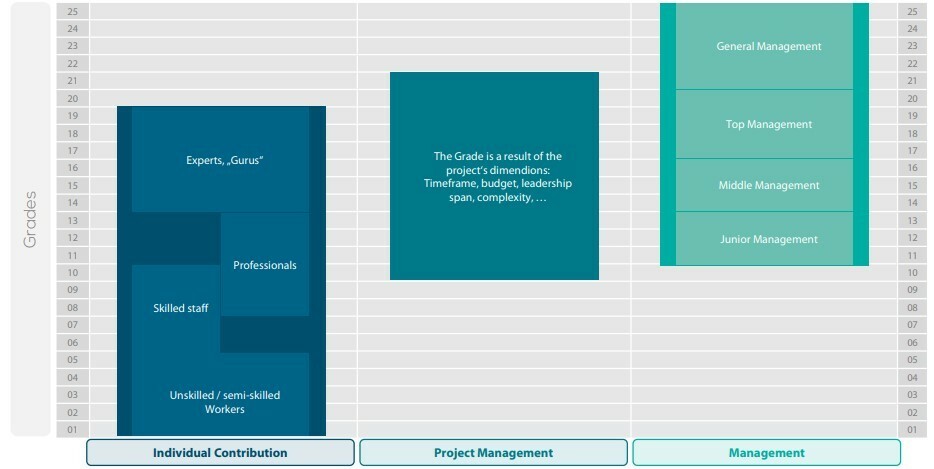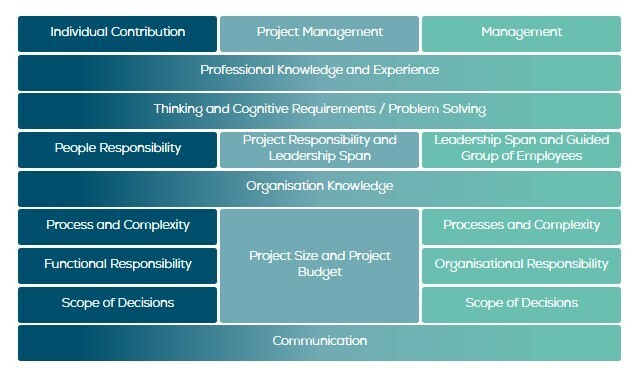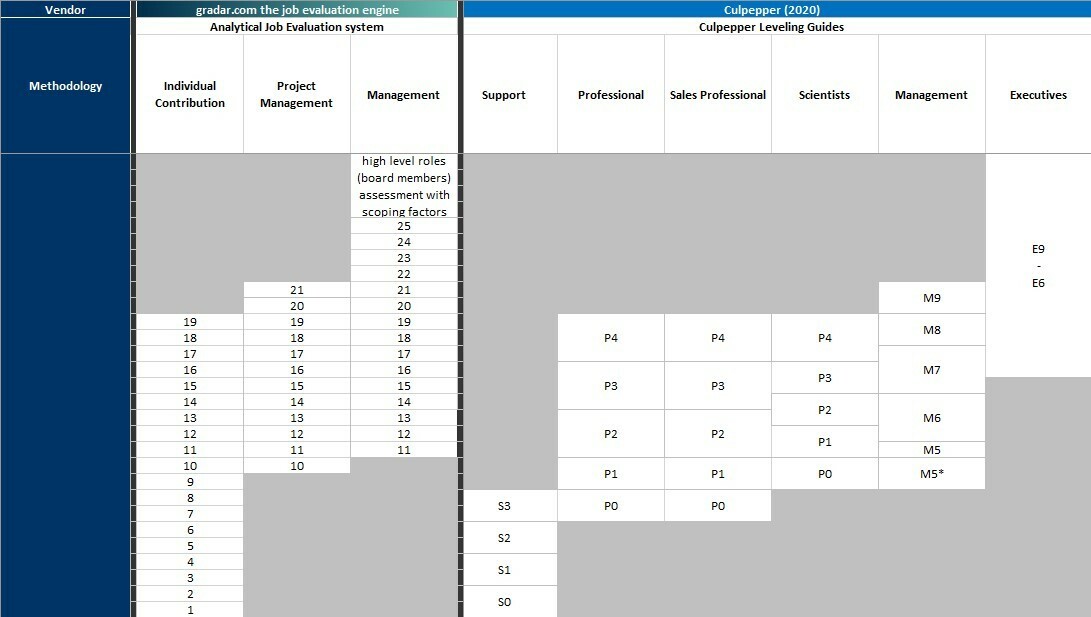Put simply, consistent job grading helps translate the jobs in your business into a clear grading structure. This provides the foundation for the development of further HR processes such as compensation structuring, creating job descriptions and managing talent and recruitment.
The grading process involves comparing a job’s requirements to the definition of a factor level (like knowledge or experience), with points taken from the level that appears the best fit. The points are added together to determine a total job score which is translated into an existing grade structure - also known as a grade map.
Job Grading is the core method of analytical job evaluation (a core element of the gradar system!) The requirements, responsibilities and other aspects of a job - but not the position holder as a person - are evaluated with a set of standardised and generalised factors consisting of several levels.
Each factor is divided into a sequential hierarchy of levels, with descriptions of these levels available to provide guidance on which to select for the job to be evaluated. A minimum and maximum points score is allocated to each factor.

Still with us so far? 😅
The trouble is, most of the traditional job grading systems were complex and difficult for employees to understand. They were only targeted at determining the price of labour instead of building the foundation for integrated job architectures with career paths and competency models.
gradar’s approach to job grading changes that. Today, We use a point-factor comparison and qualitative factor level descriptions to determine a grade that shows the relative value of the positions and does not need to have an immediate link to the price of labour.
But what about our grade map itself?
Well, gradar evaluates jobs using three career paths and offers a grade range of 1 to 25. Jobs with the same grade number are considered to be equivalent in terms of their requirements across all career paths.
It’s worth mentioning that segments like ‘gurus’, ‘middle management’ and more are mainly illustrative. These categories can vary across the grades depending on the size and the complexity of your organisation - and pretty much everything in the gradar system is configurable to your specific needs!
Anyway, with gradar, the job grading process starts by selecting one of our career paths, before assessing the job-specific requirements for career-specific factors and letting our algorithm deliver an accurate grade:
Management
Management positions place their emphasis on the disciplinary management of employees and organisational units - as well as budget responsibility. Their achievements are typically of an indirect nature through leadership, promotion, support and motivation, alongside functional use of the resources available to achieve certain business objectives.
Project Management
The core objective of project managers is the management of time-limited, one-off projects by coordinating, planning and distributing personnel, resources and budgets.
Individual Contribution
Position holders contribute mainly through the application and development of specific skills. Professionals usually contribute individually or as members of an organisational unit. Responsibility may extend from the execution of individual tasks of an unskilled worker to the technical management of a discipline as an expert. Disciplinary leadership does not belong to the core tasks.
From there, it’s a relatively simple exercise to grade the jobs in your organisation based on career-path-specific factors. The gradar system provides clear factor definitions and distinctive verbal level descriptions, making the grading process easy to understand for everybody involved with a reduced risk of bias.

From unskilled workers to strategic experts, from project managers to people managers, gradar provides consistent, objective results on all job levels by following a strict requirements-based approach.
But that’s not the best part…
With our deep expertise in job evaluation (and knowledge of various providers!), we’ve created a job levelling comparison - our own version of the ‘Rosetta Stone’.
We are making this overview available free of charge as a completely revised and expanded new edition. It provides an orientation aid for comparing gradar grades with assessment levels from salary surveys by numerous providers and from collective agreements.
This job matching is even built directly into the gradar system - a major time saver for all compensation professionals. At any point in your job grading exercise, you’ll know how a gradar level translates into codes from multiple survey vendors (like Culpepper in the example below):

Oh - and you can even download the full read-across here: qpm.de/en/rosetta/
So… With clear factor levels, more than 400 global job families allowing for the translation of grading results into job codes from numerous compensation surveys and a comprehensive grade map from levels 1-25, gradar is the ideal tool to evaluate positions in organisations of all sizes in all industry sectors - public or private.
If you want to know more about analytical job evaluation or anything related to the gradar system, feel free to get in touch. We’re always here to lend a hand at gradar.com!



